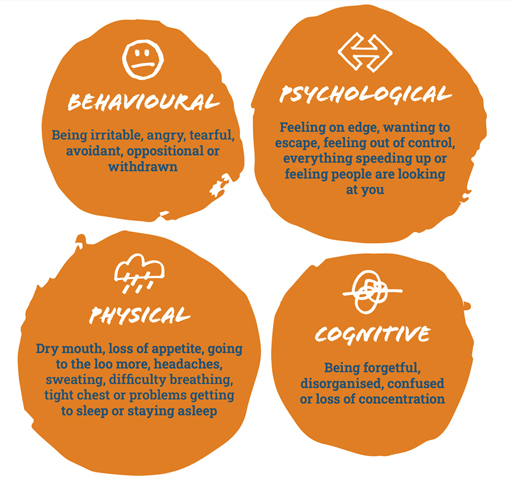Anxiety (and stress)
Anxiety and stress are two of the most widely reported, and commented on, mental health conditions relating to learners in recent years – in particular following peoples’ experiences of the COVID-19 pandemic. Broadly speaking, stress is not a mental health condition per se, more of a physical response to factors around you. The Mental Health Foundation (2018) defines it as ‘the degree to which you feel overwhelmed or unable to cope as a result of pressures that are unmanageable’. Some stresses, such as preparing for and taking tests or exams, or responding to an emergency, can be motivating and not necessarily unmanageable, and are therefore not necessarily related to mental health problems.
Anxiety is something which can be experienced fleetingly as a normal response to a life event or circumstance, but when it becomes uncontrollable and excessive, interfering with daily life and activities, it can be considered a mental health issue or condition (Mental Health Foundation, 2023). In educational settings, anxiety can show itself in quite specific ways. For example, much research has been conducted on experiences such as maths anxiety (Khasanweh, Gosling and Williams, 2021) and test anxiety (von der Embse et al., 2018). The Charlie Waller Trust (2021) has summarised the different ways anxiety can be felt in Figure 4.

Some of the signs and symptoms described above may be only temporary and could be considered as understandable reactions to the people, environment or events around us in certain circumstances. However, where these signs and symptoms are experienced for extended periods of time, more frequently or to extremes, then further support and assessment may be needed.
